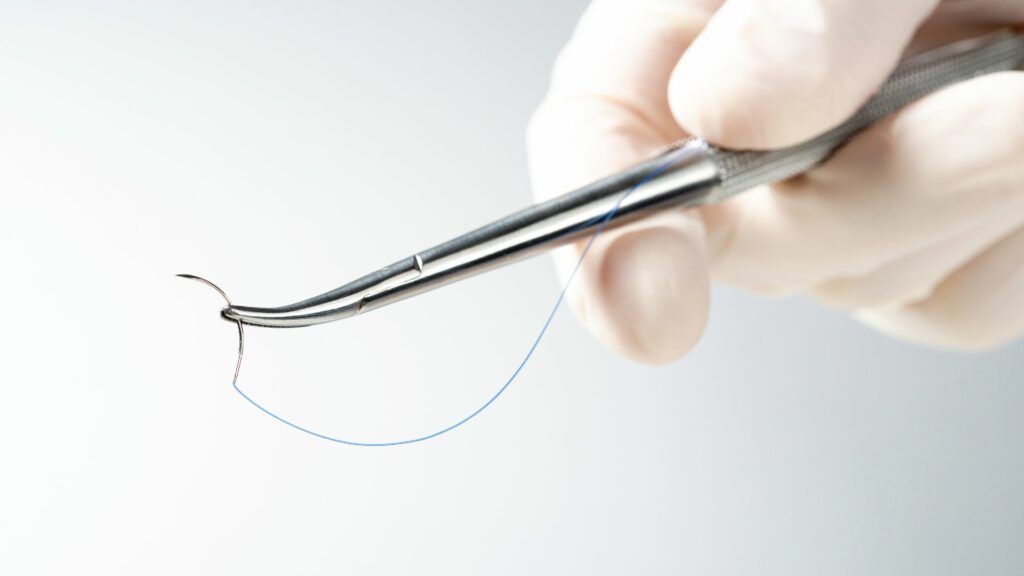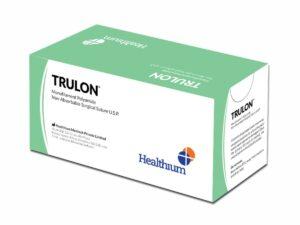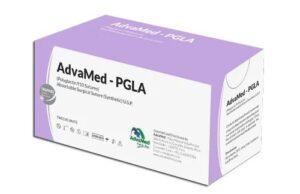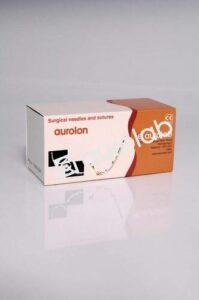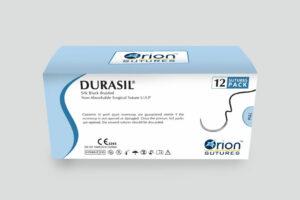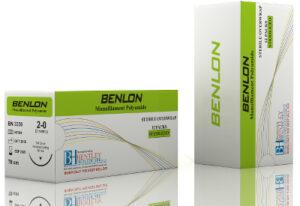As medical technology advances, so does the need for efficient and effective wound closure techniques. Sutures are most commonly used by healthcare professionals, a procedure that involves the use of thread-like materials to sew together the edges of a wound.
In this blog, we will know about the types of sutures available. We’ll also know the proper techniques of suturing, the risks associated with the procedure, and how sutures are used in veterinary medicine. But that’s not all. We’ll also cover the common complications that can arise from suturing, including suture reactions, infections, and granulomas.
And for those interested in exploring cutting-edge medical technology, we’ll introduce you to Medzell, a futuristic B2B platform that promotes Indian medical devices in emerging markets.
What Are Sutures
Sutures are medical devices used to hold together the edges of a wound or incision to promote healing. In the medical field, various types of sutures used for different medical procedures, and it’s crucial to choose the appropriate one for proper healing and reduce the risk of complications.
Types of Sutures
Absorbable Sutures: Types, Uses, and Benefits
Absorbable sutures are a particular kind of sutures that can disappear naturally after a while. These sutures are typically made from materials that the body can break down and absorb, such as catgut or polyglactin.
There are several benefits to using absorbable sutures. They also promote faster wound healing by eliminating the need for a follow-up appointment to remove the sutures. There are different types of absorbable sutures including.
- Catgut: Catgut stitches are among the oldest kinds of absorbable stitches, made from the intestines of cows or sheep. They are typically used for soft tissue repair and are absorbed by the body within 90 days.
- Polyglactin: A synthetic suture that is commonly used for a variety of surgical procedures, polyglactin sutures are typically absorbed by the body within 60 to 90 days.
- Poliglecaprone: This type of suture is a synthetic monofilament that is typically used for skin closure. It is absorbed by the body within 90 to 120 days.
- Polydioxanone: A synthetic suture that is commonly used for orthopedic surgery and soft tissue repair, polydioxanone sutures are absorbed by the body within 180 days.
Non-Absorbable Sutures: When and Why They Are Used
Non-absorbable stitches are made to stay in the body for a long period. These stitches are usually crafted from materials that cannot be broken down by the body, such as silk or nylon. Doctors usually use non-absorbable stitches in places where there’s a risk of stress or pressure on the suture, like in the closure of skin or fascia. There are different types of non-absorbable sutures including.
- Nylon: A synthetic monofilament suture that is commonly used for skin closure and cardiovascular surgery.
- Polypropylene: A synthetic monofilament suture that is commonly used to restore tendons and ligaments.
- Polyester: A synthetic braided suture that is commonly used for orthopedic surgery and the closure of abdominal incisions.
- Silk: A natural braided suture that is commonly used for ophthalmic surgery and the closure of superficial wounds.
- Steel: A type of non-absorbable stitch made of stainless steel, called monofilament, is frequently utilized in orthopedic surgery and the mending of tendons.
Monofilament Sutures
Monofilament sutures are of nylon or polypropylene material. They are less likely to cause tissue damage and to cause infection because of their smooth surface. They are also easier to handle and tie, making them a popular choice for delicate procedures. Some of the advantages of using monofilament sutures include.
- Reduced tissue reaction: The smooth texture of monofilament stitches creates less irritation and swelling in the nearby tissue, which leads to a decreased tissue response.
- Lower risk of infection: The smooth surface of monofilament sutures makes a barrier against bacteria, reducing the risk of infection.
- Easy to handle: The single-stranded nature of monofilament sutures makes them easy to handle and tie.
However, monofilament sutures also have some disadvantages. They are more prone to cutting through tissue than multifilament sutures, and they can be more difficult to knot securely. They also have less tensile strength than some other types of sutures.
Multifilament Sutures
Multifilament sutures consist of multiple strands of material twisted together, such as silk or cotton. Advantages of using multifilament sutures include.
- Strength: Multifilament sutures are tougher and last longer.
- Better knot security: The rough surface of multifilament sutures allows knots to grip more tightly, resulting in better knot security.
- Reduced cost: Multifilament sutures are often less expensive making them a more cost-effective option for some procedures.
However, multifilament sutures also have some disadvantages. Multifilament sutures have a chance of causing harm to tissue and carrying a risk of infection compared to monofilament sutures. They are also more difficult to handle and tie than monofilament sutures.
How to Properly Use Sutures for Wound Closure
Proper wound closure is essential for preventing infection and promoting healing. Sutures are most commonly used for closing wounds, but they must be used properly to be effective. The following steps should be taken while using sutures for the closing of the wound.
- Select the appropriate suture: Choose the correct suture depending on the wound’s location and its type.
- Prepare the wound: The wound should be cleaned before to prevent infection.
- Anesthetize the area: Local anesthesia should be used to numb the area before suturing to reduce pain and discomfort.
- Position the wound: The wound should be positioned so that the edges can be easily accessed and aligned for suturing.
- Place the sutures: Sutures should be placed evenly and at an appropriate depth to ensure proper wound closure.
- Tie the knots: Knots should be tied securely to prevent the sutures from slipping or breaking.
- Trim the excess suture: Excess suture should be trimmed to prevent irritation and promote healing.
Sutures in Surgery: Techniques and Risks
Sutures are a critical component of many surgical procedures. Sutures are chosen based on incision location, tissue type, and the surgeon’s preferences. Common suture materials used in surgery include absorbable and non-absorbable sutures. Embroidery with absorbable sutures should not be removed, whereas removing external stitches after healing requires non-absorbable sutures.
The technique used to suture a wound in surgery depends on the type of tissue being repaired. For example, delicate tissue requires smaller, finer sutures, while thicker tissue requires larger sutures.
While suturing is a critical aspect of surgical procedures, it does come with some risks. These risks include wound dehiscence (the separation of the wound), infection, and tissue reactions. However, these risks can be mitigated through proper technique and material selection.
The Use of Sutures in Veterinary Medicine
Sutures are commonly used in veterinary medicine to close wounds in animals. The location and type of tissue being repaired and the size and species of the animal will determine the type of suture used. In veterinary medicine, absorbable and non-absorbable sutures both are used. However, the animal’s size and species will affect the size and type of suture used.
Understanding Suture Reactions: Symptoms and Treatment
Suture reactions are a common complication of wound closure. They occur when the body reacts to the suture material used. Symptoms of suture reactions include redness, swelling, and pain.
Treatment for suture reactions includes removing the sutures, applying cold compresses to the affected area, and taking anti-inflammatory medication. In some cases, a steroid cream or injection may be necessary.
Sutures from Leading Indian Manufacturers
Trulon
Trulon is a non-absorbable synthetic monofilament suture that is renowned for its low tissue drag and high tensile strength. It is manufactured by Healthium Medtech Limited, one of India’s leading suture manufacturers and global suppliers. Trulon is ideal for cutaneous closure, soft tissue approximation, and ligation. It is also suitable for use in microsurgery and subcuticular closure. Thanks to its smooth texture, it creates less tissue trauma and is biologically non-adhering. Additionally, it has excellent handling and flexibility, making it easy to work with.
AdvaMed – PGLA
AdvaMed – PGLA by Adva Medical India Pvt. Ltd. is a synthetic absorbable suture that is coated with Polyglactin 910. This suture is ideal for uterus and soft tissue approximation. It is comprised of a copolymer of 90% glycolide and 10% L-lactide and retains its tensile strength for up to 32 days. AdvaMed – PGLA has improved tensile strength, which provides excellent wound support. It is also easy to handle and has a smooth surface that allows for easy tissue flow. It is available with or without needles in aluminum foil packaging.
Aurolon
Aurolon is a non-absorbable synthetic monofilament-dyed monoamide suture manufactured and supplied by Aurolab, India. It is an excellent choice for microsurgeries and ophthalmic procedures, with needle diameters ranging from 70 microns to 990 microns and needle sizes 11-0, 10-0, 9-0, 8-0 & 5-0, 4-0, 3-0 & 2-0. It has good knot-pull tensile strength, minimal tissue reactivity, and excellent elasticity. Aurolon is dyed black to increase suture visibility. Over time, the suture gradually loses its tensile strength due to progressive hydrolysis, as is typical of any nylon suture.
ORISILK Black Braided Silk Suture
ORISILK Black Braided Silk Suture stands as a non-absorbable thread crafted by Orion Sutures India Pvt. Ltd., This sterile surgical suturing material is composed of fibroin, an organic protein sourced from the domesticated Bombyx mori (B. More) species within the Bombycidae family. It undergoes a coating process using a unique wax blend and is tinted black. This suture provides extended tissue support for up to three months, has excellent handling properties and high flexibility, and offers good knot security. ORISILK is ideal for surgical procedures that require minimal sawing, tissue drag, and trauma. It has reduced capillary action and is guaranteed to be sterile.
BENLON
BENLON, manufactured by Bentley Healthcare Pvt. Ltd., is a monofilament Polyamide-6-6.6 / Nylon Suture. It is remarkably smooth and provides excellent knot security. It has good tensile strength and is easy to remove without tissue adherence. BENLON does not support bacterial growth and has no capillary action, high memory, and poor knot security. This suture is suitable for surgical procedures that require minimal sawing and tissue trauma.
Medzell – A Futuristic B2B Platform for Promoting Indian Medical Devices in Emerging Markets
Before we conclude, let’s briefly discuss Medzell, a futuristic B2B platform for promoting Indian medical devices in emerging markets. Medzell is a digital platform that connects manufacturers of medical devices in India with potential buyers in emerging markets.
Medzell aims to promote the use of Indian medical devices in emerging markets by providing a reliable and transparent platform for business transactions. The platform also aims to address the challenges faced by Indian medical device manufacturers in expanding their business in global markets.
Conclusion
In conclusion, sutures are an important tool in wound closure and surgery. They come in various types. With the advancement of technology, there are now platforms like Medzell that can help promote medical devices like sutures in emerging markets.
In summary, sutures are an essential part of wound closure and surgery, and understanding their characteristics and proper use is crucial in ensuring successful outcomes. As we continue to make strides in medical technology, platforms like Medzell can help bridge the gap in providing access to life-saving medical devices in emerging markets.
